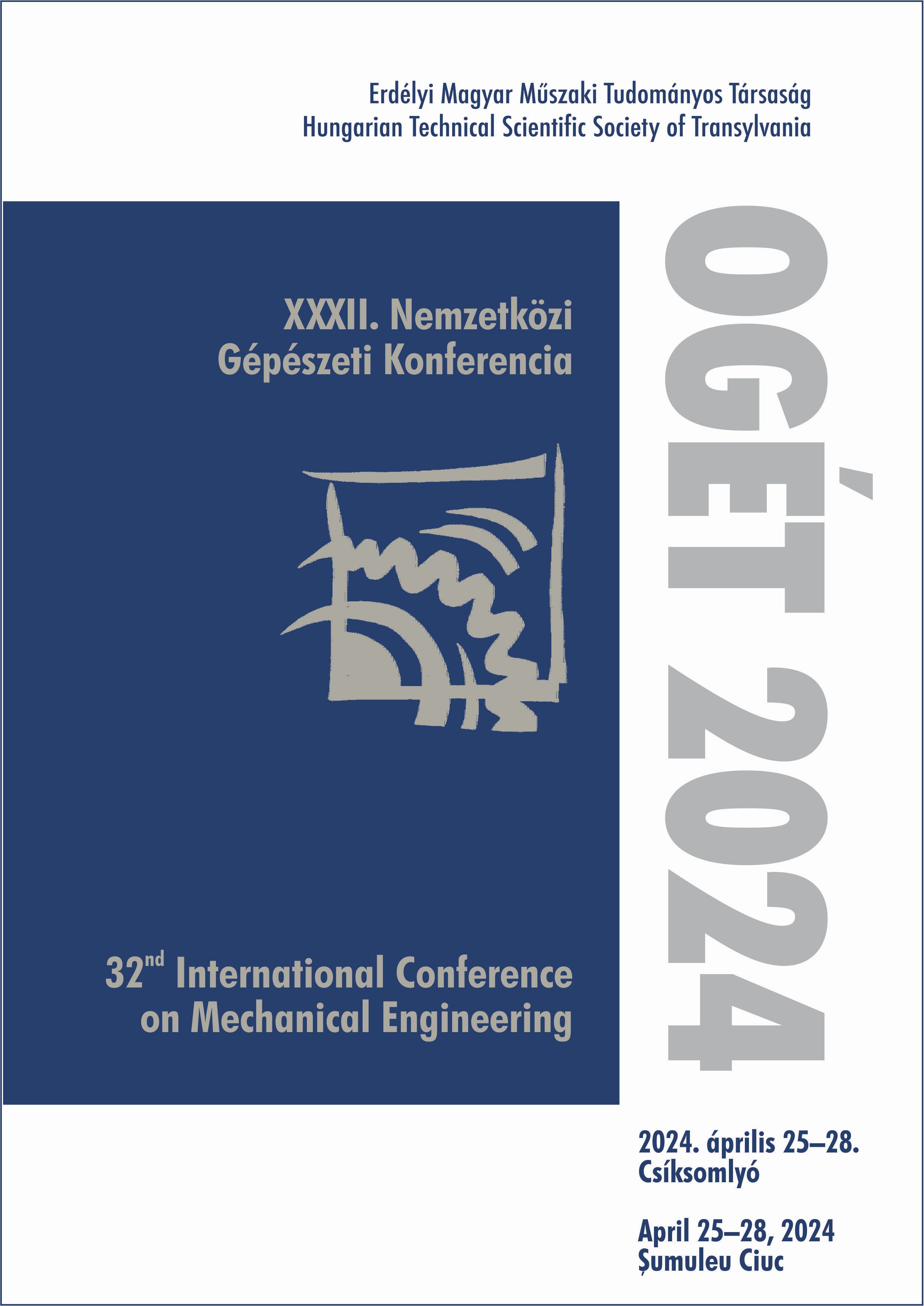CT felvételek alapján történő 3D rekonstrukció
Testing the accuracy of CT image-based 3D reconstruction
Keywords:
CT, 3D reconstruction, 3D printing, 3D scanning, accuracy test, /, 3D rekonstrukció, 3D nyomtatás, 3D szkennelés, pontosságvizsgálatAbstract
A The goal of our research group is to develop a CT reconstruction method that allows a precise adjustment that minimizes the dimensional differences between real and 3D printed models.
We hypothesized that for certain CT settings and well-defined Hounsfield limits, a reconstruction close to the ideal is achievable.
In our experiments we used 4 pig femurs, which were CT scanned and reconstructed in 3D using a specific modelling software (Materialise Mimics). Measurements were taken at different CT settings and Hounsfield limits and the dimensions of the 3D models were compared with those measured on real bones using a caliper and a 3D scanner.
Our results show that the best geometric reconstruction can be achieved by using a combination of several different windowing ranges within a single reconstruction. Once the details are worked out, the application of our results in everyday life can be of great help in improving the accuracy of everyday CT-based 3D bone reconstruction tasks.
Kivonat
A kutatócsoportunk célja egy olyan CT rekonstrukciós módszer kidolgozása, amely lehetővé teszi azt a csontablak beállítást, amely a valós és a 3D nyomtatott modellek között minimálisra csökkenti a méretbeli különbségeket.
A kutatás során azt a hipotézist állítottuk fel, hogy egyes CT beállítások és jól meghatározott Hounsfield határértékek mellett elérhető az ideálishoz közeli rekonstrukció.
A kísérleteink során 4 db sertés femurt használtunk, amikről CT felvételeket készítettünk, majd egy speciális modellező szoftver segítségével (Materialise Mimics) 3D-ben rekonstruáltuk őket. Különböző CT beállítások és Hounsfield határértékek mellett méréseket hajtottunk végre és összehasonlítottuk a 3D modellek méreteit a valós csontokon tolómérővel és 3D szkennerrel mért adatokkal.
Eredményeink azt mutatják, hogy a geometriai szempontból legjobb rekonstrukció úgy érhető el, ha egy rekonstrukción belül több eltérő ablakolási tartományok kombinációját alkalmazzuk. A részletek kidolgozását követően eredményeink alkalmazása a mindennapokban nagy segítséget jelenthet a pontosság növelését illetően a mindennapi CT alapú 3D csontrekonstrukciós feladatok alkalmával.
References
Wong KCW. 3D-printed patient-specific applications in orthopedics. Orthop Res Rev. 2016; 8: 57–66.
Wilcox BD, Mobbs RJ, Wu AM, Phan K. Systematic review of 3D printing in spinal surgery: the current state of play. J Spine Surg. 2017; 3(3): 433–43.
Parr WCH, Burnard JL, Wilson PJ, Mobbs RJ. 3D printed anatomical (bio)models in spine surgery: clinical benefits and value to health care providers. J Spine Surg. 2019; 5(4): 549–60.
Alemayehu DG, Zhang Z, Tahir E, Gateau D, Zhang DF, Ma X. Preoperative planning using 3d printing technology in orthopedic surgery. Biomed Res Int. 2021 Oct 12; 2021:7940242. doi: 10.1155/2021/7940242.Sandu V., Chiru, A. Automotive fuels, Matrix Rom, Bukarest, 2007.
Wallaca GG, Cornock R, O’Connell CD, Beirne S, Frederic G, et al. 3D bioprinting: Printing parts for bodies. ARC Centre of Excellence for Electromaterials Science, (2014); p. 100-10.
Yan Y, Chen H, Zhang H, Guo C, Yang K, Chen K, et al. Vascularized 3D printed scaffolds for promoting bone regeneration. Biomaterials. 2019; 190: 97-110.
Lichtenstein JT, Zeller AN, Lemound J, Lichtenstein TE, Rana M, Gellrich NC, et al. 3D-printed simulation device for orbital surgery. Journal of Surgical Education. 2017; 74: 2-8.
Wang Z, Wang L, Li T, Liu S, Guo B, Huang W, et al. 3D bioprinting in cardiac tissue engineering. Theranostics. 2021; 11(16): 7948–7969.
Kovács ÁÉ, Csernátony Z, Szabó D, Csámer L, Somoskeöy S, Manó S. Csípőízületi vápadefektus-klasszifikáció megjelenítése 3D nyomtatással készült modellek segítségével. Biomech Hung. 2022; 15(2):43-8.
Maglara E, Angelis S, Solia E, Apostolopoulos AP, Tsakotos G, Vlasis K, et al. Three-Dimensional (3D) Printing in Orthopedics Education. J Long Term Eff Med Implants. 2020; 30(4):255-8.
Kovács ÁÉ, Manó S, Csámer L, Somoskeöy S, Csernátony Z. Scoliosis klasszifikáció szemléltetése 3D nyomtatással előállított modellgyűjteménnyel. Biomech Hung. 2020; 13(1):7-15.


